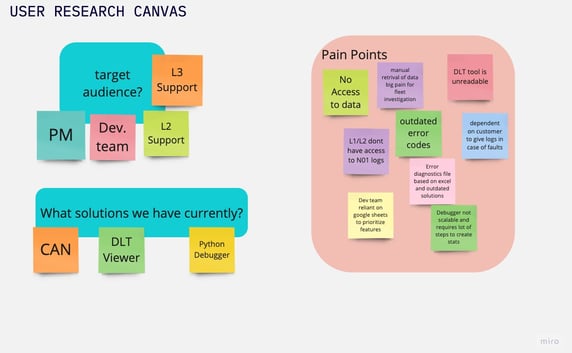Product Strategy
The idea for the asset monitoring originated in alignment with the requirements of the customers and the mission of EVBOX to achieve industry leading Uptime stats.
OVERVIEW
Attributes Description Goal 1. Develop an evolutive service platform to monitor HPC, support remote diagnostics, as well as remote repairs and updates, thus drastically shortening “Time to Fix”, but also “Time Between failures”.
Optimized charger care plans and digital service tool for FSPs and CPOs | | MVP | Q3’2023 | | OKRs | Short term
Main goal UPTIME >99,5% (i) Short time to fix (Fast troubleshooting, first time right) ( < 48 hrs for First Contact Resolution (FCR)) (ii) MTBF / reliability
Improve customer trust via high charging success rate ( target >95%)
Improve NPS score
Mid/Long term
Ability to detect patterns of failure modes before they occur (based on big data)
Proactive monitoring by established alarms and warnings notifying different stakeholders, with proposed relevant actions. | | | |
Asset monitoring development journey
User Research :
After reviewing the high level study results for the main issues with the current system, it is clear that there is much work that needs to be done to ensure a higher level of success.
One potential solution could be to increase investment in research and development to identify new and innovative approaches. Additionally, it may be beneficial to engage with stakeholders and solicit feedback to better understand their needs and concerns.
By taking these steps, I created an effective and efficient system that meets the needs of all stakeholders.
Brainstorming session:
After conducting user research to identify pain points and needs of current and potential customers, my next step was to aggregate all the ideas into potential solutions. This process involved brainstorming sessions to develop a list of features that would meet the identified needs.
The image below shows the potential features that were developed and how they map back to the user pains. The team eventually aligned all the features to feed into the global product, which is asset monitoring.
Mapping the features to the user pains helped the team ensure that the product would meet the needs of current and potential customers. This process also enabled them to prioritize the features based on their impact on resolving the user pains.
Overall, the process of identifying user pains and needs, and brainstorming potential solutions was critical in developing the asset monitoring solution. It allowed the team to create a product that would meet the needs of their target market and stand out in the B2B industry.
Solution flow
Issues/ KPIs
Business canvas Diagram
Roadmap / Timeline
The product roadmap for Asset Monitoring is created using Agile methodologies in JIRA. Below Is a rough dev plan. The complete feature map is not shared to maintain secrecy related to project.
The roadmap here is a living flow and can be optimised to reflect changes in the product development process, as well as changes in the market or customer needs. This can involve adding or removing features, adjusting timelines, and adjusting budgets.
To ensure transparency and alignment, the roadmap is shared with stakeholders, including employees, investors, and customers. This is done via biweekly newsletters, progress reports, and meetings.
Prioritization
KPI Definitions
Uptime: Percentage of time a Charger is delivering power or ready to deliver power, as part of the total time it was activated (since commissioning) and has power available to it.
Charging Success Rate:
Charge at first attempt with energy delivered and no interruption by charger error or malfunction, even with Degraded service or limitation on charger side
Success metrics
Quantitative :
UPTIME > 99.5% ( currently sits at 90%)
SUCCESSFUL CHARGING SESSIONS > 98% ( currently at 87%)
Qualitative :
NPS to achieve with dashboard > 22 ( currently at 2)
Open Issues
Scalability interms of server selection.
Q&A
What will be the level of access for different users?
Who should be contacted in case of SW issues with dashboard?
Where can i find documentation to use Dashboard?
Resources
Confidential.


